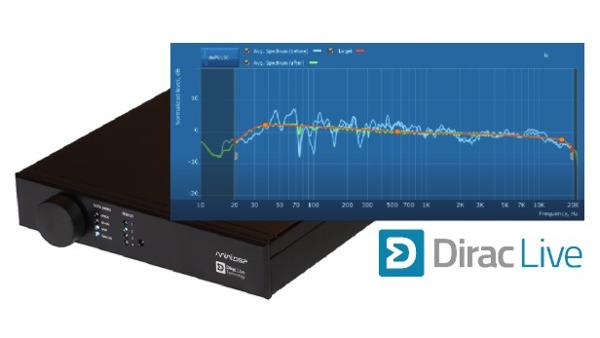Dirac Live 1.2 For Mac
Posted : admin On 29.12.2020What is Dirac Live
Room Correction Suite?
General questions
and answers
- Dirac Live 1.2 For Mac Osx
- Dirac Live Download
- Dirac Live 1.2 For Mac Pro
- Dirac Live Processor
- Dirac Live Review
- Dirac Live 1.2 For Mac Os
Technical questions
and answers
1. EQUIPMENT
The Dirac Live Room Correction Suite™ is an audio software that delivers optimized sound quality for any PC or MAC®-based Hi-Fi system. The software, which requires a microphone, measures the acoustic performance of the system within the listening room and optimizes playback performance accordingly, providing the most transparent music. How do I configure the PWR-series plate amps using Mac? Can I upgrade my 4x10 HD or 10x10 HD to Dirac Live? See all 6 articles. Car Audio Series (CDSP 6x8/8x12) 0.
1.1. Does Dirac Live Calibration Tool (DLCT) support USB speakers for measurement and optimization?
Yes, as long as they show up as a sound device in the operating system they can be measured and corrected.
1.2. Can DLCT measure and optimize built-in PC speakers?
Yes, as long as they show up as a sound device in the operating system they can be measured and corrected.
1.3. What formats for microphone calibration files do you support?
We support UMIK-1 calibration files, XTZ calibration files and .omm calibration files used by Dayton Audio. There is currently no clear standard on how calibration files look, when there is one we will implement support for that. If you got a room calibration microphone with another calibration file, please read the documentation on how to adapt it for use with our software.
1.4. Avoid any combination of microphone and sound cards?
In general, it is difficult to say how different hardware and their driver software will work together on a computer system. It usually depends on how well they comply with standards. Simultaneous use of two USB audio devices must be through different USB controllers to work properly. Therefore, make sure to have a different USB controller for each USB audio device that will be used at any time.
1.5. I have a 2.1 channel system with one or several subwoofers. Do I need the Full Version (multichannel) of Dirac Room Live Correction Suite or is it sufficient with the Stereo Version?

The Stereo Version is normally sufficient. Note that Dirac Live Room Correction Suite does not include crossovers or bass-management, these functions need to be applied separately. While crossovers should be applied downstream of (after) Dirac, bass management or any mixing of source signals into speaker channels should be applied upstream of (before) Dirac. The main rule of thumb to follow is that one should not mix together two separately Dirac Live-processed channels into a common speaker channel.
2. GENERAL
2.1. Pink noise or sweep measurement signal?
Both are good for different purposes. Noise is more robust against narrowband disturbances, such as hum or speech. Sweep is better for detecting non-linear distortion. In an environment without much disturbance, then a sweep is preferable.
Creaks download mac. 2.2. What measurement signal does Dirac recommend for a specific speaker?
For most cases, a sweep is preferable.
2.3. What frequency response target curve does Dirac recommend for optimization?
Please see the Target curve design guidelines in the User Manual.
3. Dirac Live Calibration Tool™ (DLCT)
3.1. Can DLCT import target curve files?
Yes, in the Filter Design tab it is possible to load a previously saved target curve.
3.2. How do I manage a multi-room measurement in DLCT for simultaneous multi-room processing in Dirac Audio Processor (DAP)?
Filters can be designed for multiple listening rooms by creating multiple projects in DLCT. However, multi-room simultaneous playback is not yet a supported feature in the Dirac Audio Processor. If you are using an external processing unit, then multi-room may be supported by that device. To load several filters for simultaneous use in a multi-room setting, then please consult the user manual of the corresponding processing unit.
3.3. Why do I have to be online to run my calibration?
This is to protect against illegal copying and unauthorized use.
3.4. Where are the filters stored on my computer?
To be able to load the filter in the Dirac Audio Processor, make sure to save them in the default directory suggested by Dirac Live Calibration Tool:
Windows 7/Vista: %APPDATA%DiracFilters
Mac: ~/Library/Application Support/Dirac/Filters
3.5. How does phase correction work above the Schroeder frequency?
Dirac Live 1.2 For Mac Osx
Above the Schroeder frequency (or generally, the higher frequencies that you consider) the job of mixed-phase correction becomes trickier. First, you need to have a proper amount of measurements spread out over the listening region. This makes it possible to determine which non-minimum phase behavior that is consistent across measurement positions (and in between) and which behavior is inconsistent (that is, too different from one position to another to be possible to correct for).
Second, you should only correct for the behavior which is consistent across the measurement positions. The higher in frequency you go, the more consistent the behavior has to be to be robustly invertible. In essence, the amount of phase correction that is applied is typically lessened with frequency (as is the level of detail in your magnitude response correction). This is typically the case, but all of this is determined from the actual measurements. The correction is always tailored to what is actually measured in your particular case. The trick is to do the most correction that you can robustly over all the measurement positions, but never more.
3.6. Why is there no validation feature?
The predicted response may look too good to be true, but it is important to interpret the curves in the right way; the prediction curves show the response in exactly the point each curve is based on. In theory the curve can be totally different just a small distance away from it, but in practice this is rarely the case. In order to avoid optimizing the filter for a really small area at the expense of the actual listening area, multiple measurements are used, taken in different points. Their average is the basis for the filter calculations. Together with the spatial robustness of the Dirac Live room correction technology this will result in a filter that sounds good in a large area. However, for a measurement to produce the predicted curve the microphone need to be in the exactly same position, otherwise the result will just be close to the prediction. It is also important to compare a validation measurement to the curve that corresponds to that measurement position and not the average curve.
If you want to measure the result of the filter you can either use some application such as HOLMImpulse, or you can select the Dirac Audio Processor as the output device on the sound setup page. If this method is selected it is very important to note that the Dirac Live Calibration Tool will disable filtering in the Dirac Audio Processor before each measurement, and you will have to enable it manually real quick. The reason the Dirac Live Calibration Tool disables filtering is that most measurements will not be for validation but for room analysis, and in this case any filtering has to be disabled.
3.7. How are the displayed frequency curves smoothed?
The displayed individual (select “All (before)” or “All (after)” to view) frequency response curves are smoothed with a 1/8 octave smoothing filter. The displayed average (do NOT select “All (before)” or “All (after)” to view) curves are averages of the individual (unsmoothed) frequency responses, then smoothed with the 1/8 octave smoothing filter.
4. Dirac Audio Processor™ (DAP)
4.1. What sample rates does DAP support?
The DAP supports any sample rates up to 192 kHz which have been designed into the Dirac Live® filters. The sample rates designed into the Dirac Live® filters are selected by the user from the rates supported by the sound device used in the DLCT. However, to fully support a certain sample rate, then each of the blocks in the process line below have to support that rate. Note that the operating system can be configured to a different sample rate than the media player, making the operating system re-sample the data to its configured sample rate. This re-sampling can be detrimental to the audio quality! Try setting the operating system to use the original source sampling rate. User control over sampling rate is not possible in Windows XP.
4.2. Can DAP process 24 bit audio sources?
Yes, the DAP can process 24 bit data. The same policy as for sampling rates applies to data word length, see What sample rates does DAP support? Internally, the DAP uses 32 bit floating point arithmetic to maximize fidelity throughout the filtering process.
Dirac Live Download
4.3. Does DAP provide a bit-perfect (assuming that filters are all-pass) signal chain?
Dirac Live 1.2 For Mac Pro
No. There is at least a fixed attenuation at the output from the DAP, also in the Filter Off state.
Dirac Live Processor

4.4. Why is the output level so low from DAP?
There is a fixed attenuation in the DAP. It is there to avoid clipping from the increased dynamic range invoked by the rather dynamic equalization filters. This attenuation is also present in the Filter Off state, to equalize the levels of the bypassed and the filtered audio.
Dirac Live Review
4.5. How do I delete some of my filters?
The filters for the Dirac Audio Processor™ should be kept in the default directory suggested by Dirac Live Calibration Tool™:
Windows 7/Vista: C:Users%username%AppDataRoamingDiracFilters
Mac: ~/Library/Application Support/Dirac/Filters
You may delete the filters using your operating system’s file browser.
Dirac Live 1.2 For Mac Os
4.6 How do I show up the DAP in the playback device list in the sound settings window?
You can try the following:
1. Choose ‘Exit Controller’ on the Audio Processor if it is running, and close all applications that may use the sound card.
2. To make sure no Dirac process is running, press ctrl+shift+escape to start the task manager and end the diracapsrv.exe process if it is running.
3. Start the Audio Processor.
4. If no device is selected under ‘Output Device’, choose one, but not an ASIO device.
5. If the Audio Processor starts with an ASIO driver chosen under ‘Output Device’, another device instead (then you may change back to ASIO if desired).
